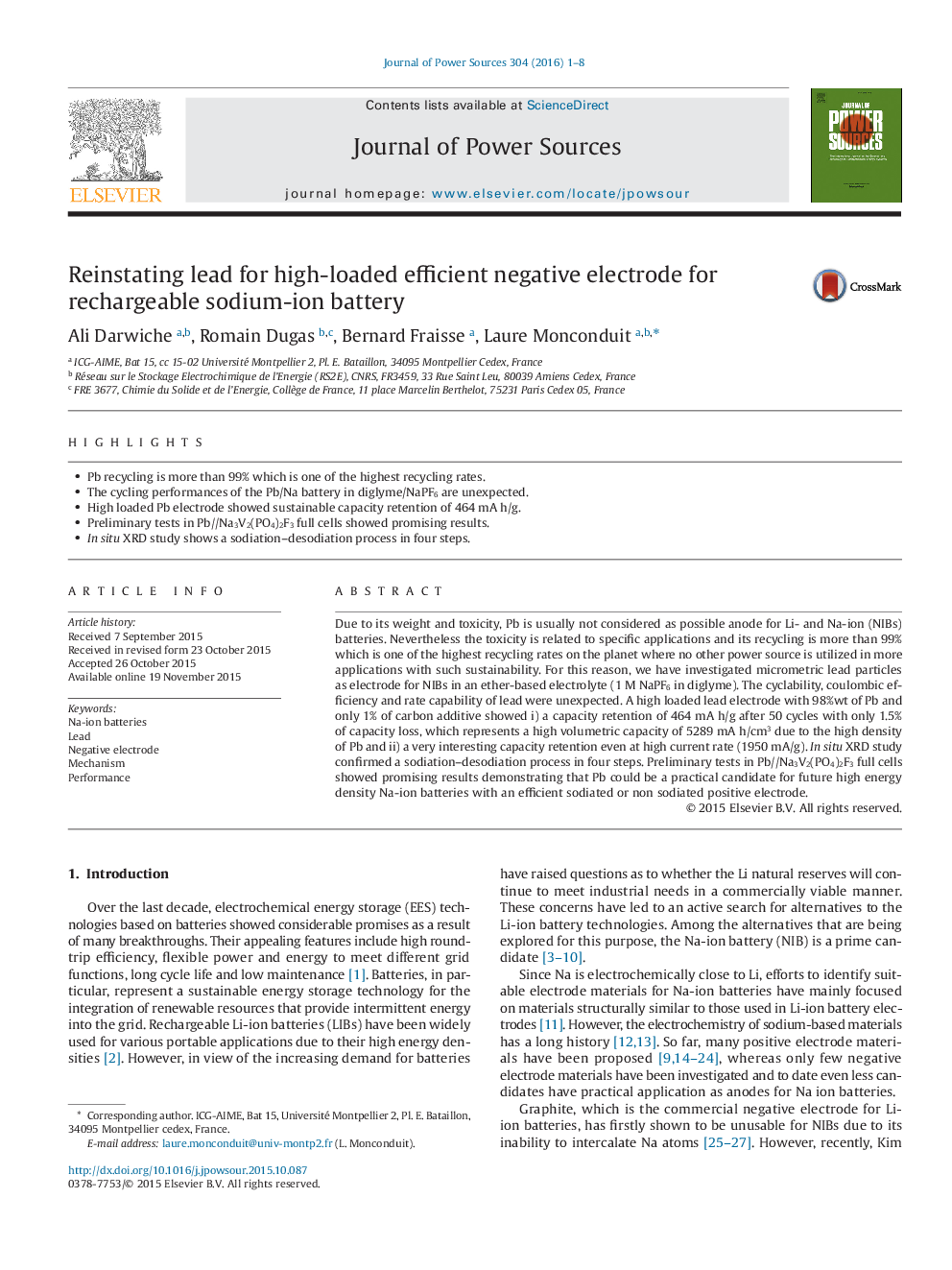| کد مقاله | کد نشریه | سال انتشار | مقاله انگلیسی | نسخه تمام متن |
|---|---|---|---|---|
| 1285667 | 1497928 | 2016 | 8 صفحه PDF | دانلود رایگان |
• Pb recycling is more than 99% which is one of the highest recycling rates.
• The cycling performances of the Pb/Na battery in diglyme/NaPF6 are unexpected.
• High loaded Pb electrode showed sustainable capacity retention of 464 mA h/g.
• Preliminary tests in Pb//Na3V2(PO4)2F3 full cells showed promising results.
• In situ XRD study shows a sodiation–desodiation process in four steps.
Due to its weight and toxicity, Pb is usually not considered as possible anode for Li- and Na-ion (NIBs) batteries. Nevertheless the toxicity is related to specific applications and its recycling is more than 99% which is one of the highest recycling rates on the planet where no other power source is utilized in more applications with such sustainability. For this reason, we have investigated micrometric lead particles as electrode for NIBs in an ether-based electrolyte (1 M NaPF6 in diglyme). The cyclability, coulombic efficiency and rate capability of lead were unexpected. A high loaded lead electrode with 98%wt of Pb and only 1% of carbon additive showed i) a capacity retention of 464 mA h/g after 50 cycles with only 1.5% of capacity loss, which represents a high volumetric capacity of 5289 mA h/cm3 due to the high density of Pb and ii) a very interesting capacity retention even at high current rate (1950 mA/g). In situ XRD study confirmed a sodiation–desodiation process in four steps. Preliminary tests in Pb//Na3V2(PO4)2F3 full cells showed promising results demonstrating that Pb could be a practical candidate for future high energy density Na-ion batteries with an efficient sodiated or non sodiated positive electrode.
Journal: Journal of Power Sources - Volume 304, 1 February 2016, Pages 1–8
